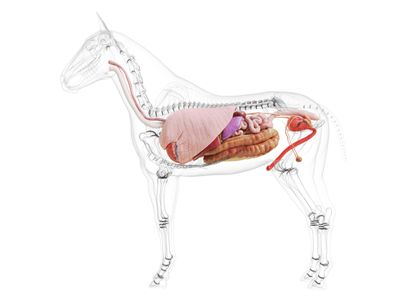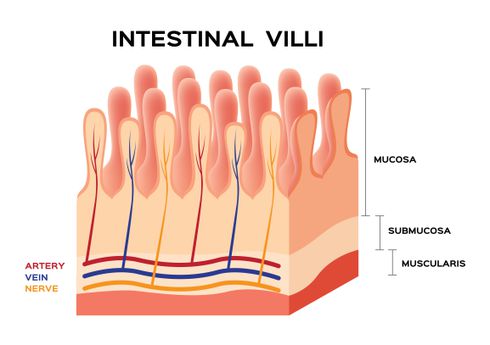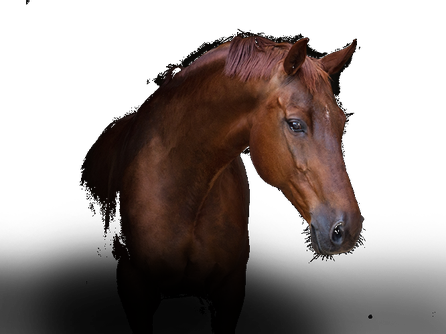Academy
/
Horse
/
Gut & Intestines
/ The horse's gastrointestinal system
The horse's gastrointestinal system
The Horse - A cecal fermenter
The horse is a cecal fermenter, meaning that the feed is broken down, and nutrients are absorbed primarily in the horse's cecum. The horse's digestive system is large, long, and home to millions of microbes, all of which play a significant role in maintaining the horse's health and peak performance.

Mouth
The digestive process begins in the mouth, where food is ground into smaller particles and mixed with saliva. Horses produce large amounts of saliva, particularly when chewing roughage. A hay bale can absorb up to four times its own weight in saliva as the horse grinds it in the mouth. Saliva softens the food, aiding its smooth passage through the esophagus.
Stomach
After the mouth, the food passes through the throat, down the esophagus, and into the stomach. In the pharynx, the food is directed into the esophagus and air into the trachea via the epiglottis, also known as the "windpipe flap." In the stomach, some digestion and breakdown of food occur with the help of enzymes and microorganisms.

Small intestine
From the stomach, food moves into the small intestine, which is about 30 meters long. Despite its impressive length, the process here is relatively fast, taking 60-90 minutes for the food to pass through. The small intestine contains digestive juices that neutralize the acidic stomach contents and, together with enzymes, break down protein, fat, sugar, and starch.
Compared to humans, horses produce relatively fewer enzymes, which limits their ability to handle fats, sugars, and starches. Horses are adapted to a low-fat diet, which is why they have never developed a gallbladder like carnivorous animals. Instead, their liver produces bile to handle the fatty feed the horse consumes.
Large intestine
From the small intestine, the food passes into the large intestine, where most of the breakdown occurs. What we commonly refer to as the horse's large intestine actually consists of two different sections: the cecum and the large colon.
The cecum alone holds between 30-40 liters, while the large colon holds between 70-80 liters. The food passes slowly through the large intestine, with the entire process taking between 36-72 hours. The horse relies on microorganisms in the large intestine to break down the feed and convert it into usable nutrients. These microorganisms break down the fibers from roughage to provide energy for themselves. The byproducts of this energy conversion are volatile fatty acids, which the horse can use as an energy source. The energy produced from fiber breakdown accounts for approximately 70% of the horse’s energy needs.
Rectum
The final station in the horse's digestive system is the small colon and rectum. In the small colon, water is absorbed from the food mass, and when the horse’s feces leaves the rectum, the dry matter content is between 20-30%.

To install this Web App in your iPhone/iPad press ![]() and then Add to Home Screen.
and then Add to Home Screen.


